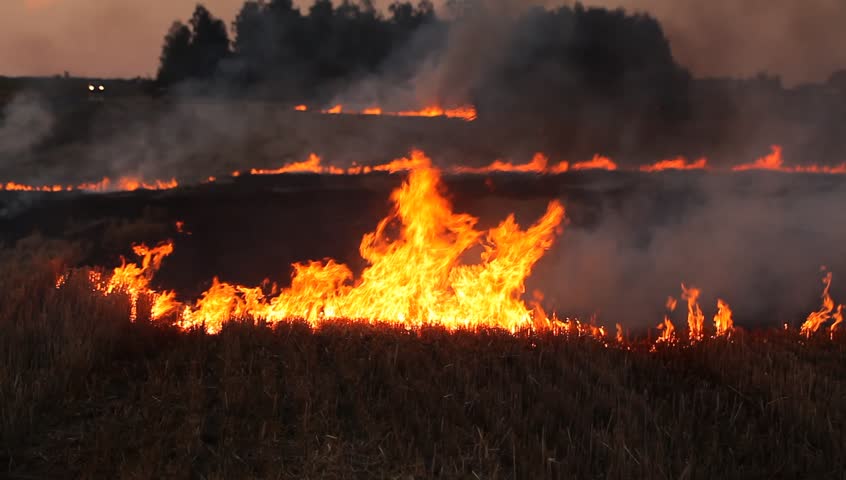You shake my breath and you rattle my health
By: Phillip Schaefer, University of Saskatchewan Student
Come the fall, the field will be harvested, your grain in the bin, and if you’re lucky, everything will quickly be hauled off. All that will be left on your field is the straw, and if it’s a flax field, that straw becomes a real pain next seeding season. It wraps around the seeding equipment until it’s so tightly bound you need a serrated blade and 2 hours of precious seeding time to get it off. So, naturally, farmers have been burning their straw post-harvest for years to avoid this problem. Driving around in the fall and seeing a flax field with heaps of little flax straw hills is commonplace in rural farming communities. Also common is the burning that follows. Burning the straw is such an easy way to eliminate seeding stress that we rarely look at the side effects, such as pollution and adverse environmental effects.
Back in the 1950’s, agricultural scientists legitimized the practice of burning flax straw because the recovery of the flax fibre from it was not worth the trouble, since the variety grown on the Canadian prairies produced stems too rigid for traditional flax fibre recovery processes to recover the fibre. Today, Canada grows about two million acres of flax, and burns nearly one million tonnes of straw annually, since it’s been an accepted government policy for the past 60+ years. We are not living in the 50’s anymore though. Technology has increased tremendously, to the point where it is possible to retrieve flax oil from the long textile fibre in the stem called the bast fibre, by means of proper organic acid and alkaline treatments.
The debate whether or not we should burn flax straw has been kept relatively on the down low, with no widespread public attention at all. This needs to change though. I believe there are so many options that can be taken advantage of when it comes to flax straw. The bast fibre is strong and flexible, and while not being as high quality as the fine linen produced in Europe, it could be used in woven textiles and reinforcing other fibres. We can obtain about 20% bast fibre yield from the flax straw, with the other 80% comprising of plant matter rich in complex sugars and lignin. This plant matter can be used in renewable energy commodities to substitute burning of coal and so on.
The Saskatchewan government relies on voluntary action urging farmers to “think of your neighbour” before they burn their flax straw. This sort of mentality is not working anymore though. In 2012, The Globe and Mail explained that people have become more self-oriented especially with the increase of large corporate farms having less regard for what one of their 200 neighbours. I firmly support the idea of policies being put into place to slowly ban this practice, since the alternatives are only increasing year by year, and the smoke truly is detrimental to the environment no matter what any farmer will tell you.
Phillip Schaefer

Phillip has just completed his third year towards his Agribusiness degree at the University of Saskatchewan. Growing up on a grain farm southeast of Regina, and having lived in a high school dormitory for four years, Phillip is familiar with both the rural and urban lifestyle. He is passionate about finding ways to reduce agricultural practices impacts on the environment. As well Phillip strongly believes educating young farmers about proper agricultural practices is of utmost importance. Besides being a student or working, Phillip finds times to enjoy both the indoors and outdoors, whether it be mountain biking, snowboarding, reading and a good film.


